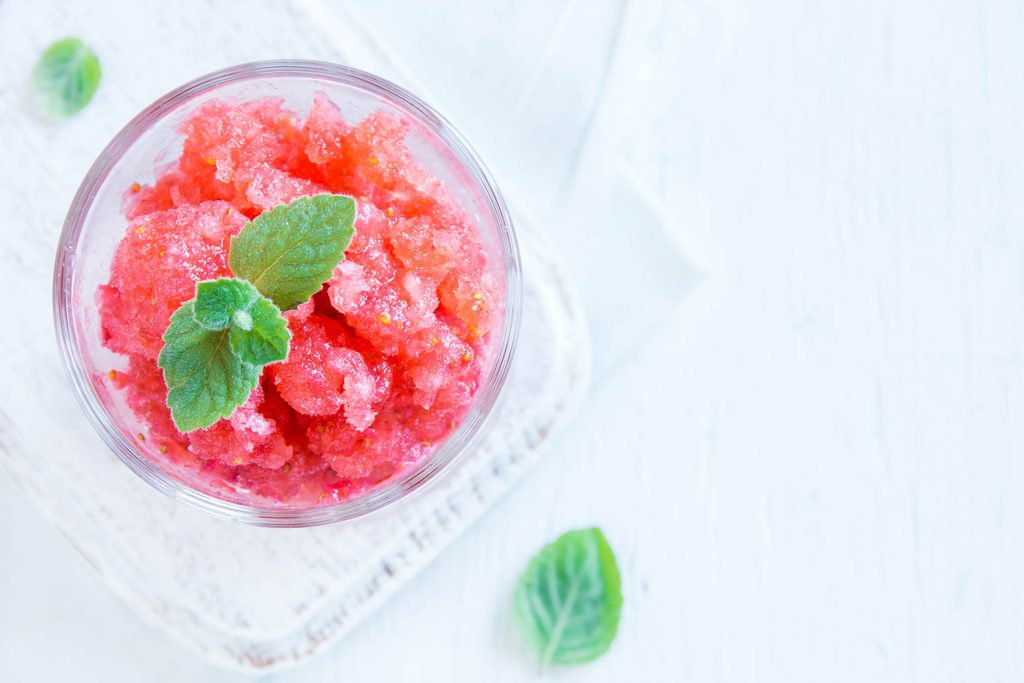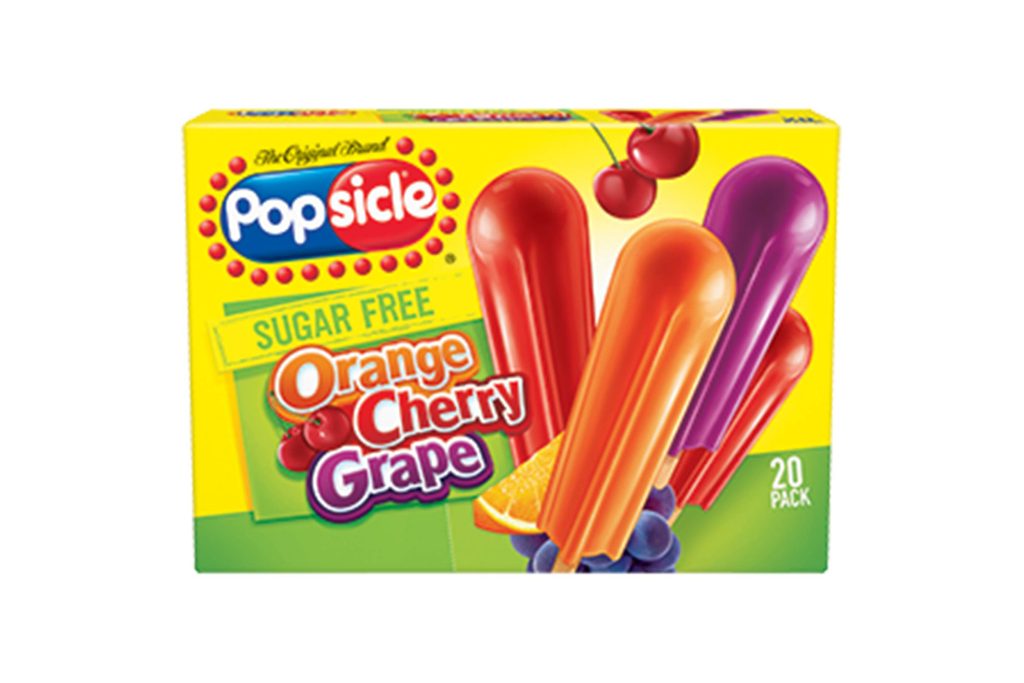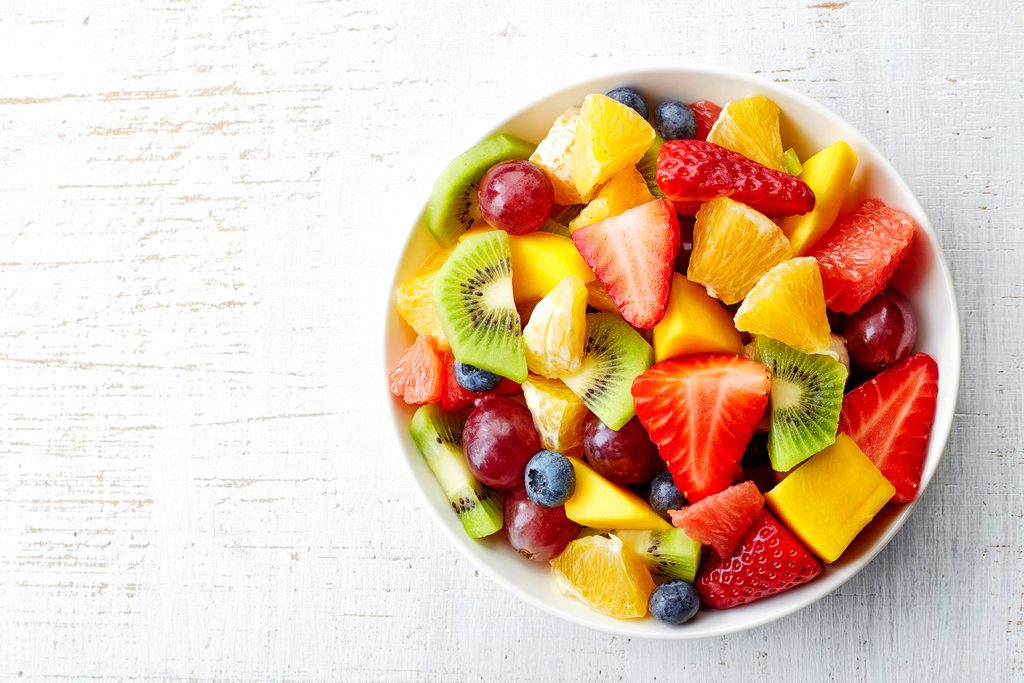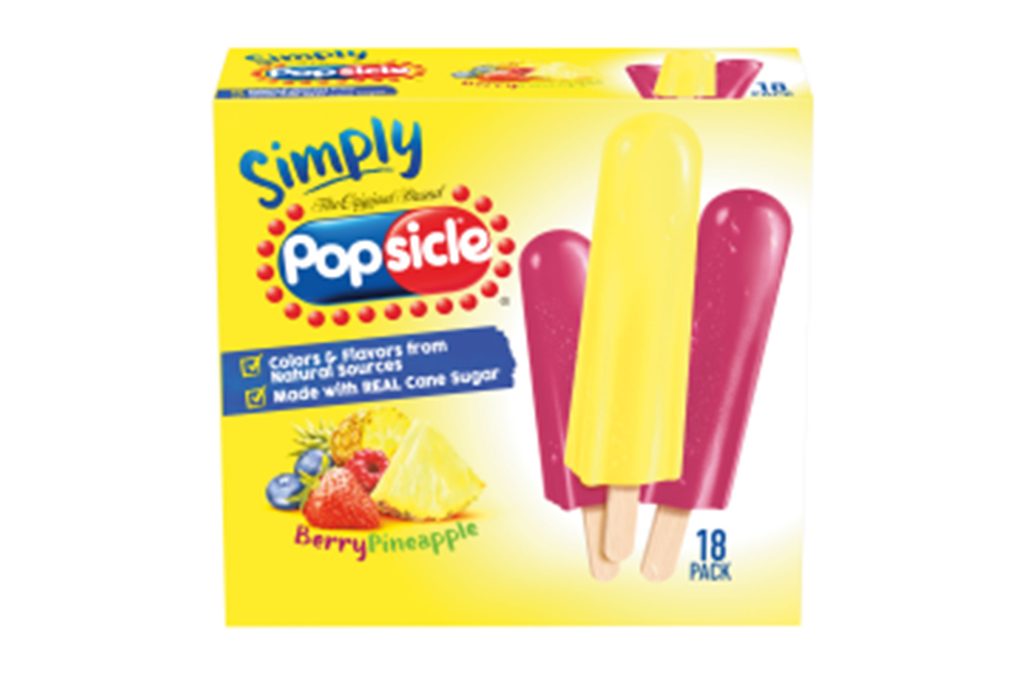![01_Core-LB-Kiwi-(003)[2][1]](https://www.rd.com/wp-content/uploads/2017/04/01_Core-LB-Kiwi-00321.jpg?resize=1024,683)
Homemade frozen yogurt
The best part of a froyo cup is usually the sweet toppings like crushed cookies, gummy worms, or chopped candy bars you can pile on top. Unfortunately, they add more than a fun twist to dessert—extra calories, carbs, fat, and sugar can quickly add up to unhealthy levels, especially for people with diabetes who need to be critically mindful of what they’re putting in their body in order to keep blood glucose levels in a safe range. “People with diabetes can still enjoy a sweet treat on occasion when their blood sugar levels are well controlled. Try to keep portions small and limited to 15 to 30 grams of carbohydrate per serving,” says Melissa Matteo, MSRD, LD, CDE, a certified diabetes educator and registered dietician at the Cleveland Clinic in Cleveland, Ohio. Instead, freeze Chobani’s blended Greek yogurt, which comes in seasonal flavors like watermelon and kiwi. Each cup has about 13 grams of sugar, 12 grams of protein, and just 15 grams of carbs, the nutrient that raises blood sugar levels the most. Choose healthy toppings like a small handful of chopped nuts, which are filled with healthy fats, fiber, and protein; a small square of crushed antioxidant rich dark chocolate; or a sprinkle of sugar-free cocoa powder; and you have yourself a delicious diabetes-friendly snack.
Pie pops
The tasty JC’s Pie Pops may have been created by accident (a bowl of Italian custard accidentally froze solid instead of setting), but turns out they’re a sweet treat even diabetics can eat. JC’s nudies are the best option, with just 18 grams of carbs, four grams of fat, and 120 calories a pop. If you’re indulging in a sweet treat, be sure to monitor your blood sugar levels extra carefully and keep careful track of your sugar and carbohydrate intake to ensure you’re not overdoing it the rest of the day or week. (Make sure you’re taking extra precautions this summer if you’re a diabetic.)

Granita
A balanced diet is important for everyone to follow, but especially for people with diabetes. Keep things under control by turning your daily serving of fruit into a refreshing frozen treat. “Make a granita with sugar, water, and pureed fruit like berries or melon. You can always use less sugar than what the recipe call for or use a sugar substitute in its place,” says Matteo. Looking for more? Indulge your sweet tooth this holiday season (without any guilt) with this collection of diabetes-friendly dessert recipes.

Sugar-free Popsicles
All sugar-free foods aren’t necessarily a good choice for diabetics because they sometimes contain too many carbohydrates, which can cause blood sugar levels to rise. One sugar-free option that is safe, though, is Popsicle’s Sugar-free Ice Pops, which contain only four grams of carbs. Reminisce about your childhood with classic flavors like orange, cherry, and grape, or suck on tropical flavors like pineapple and fruit punch.
![05HaloPints-Group-2-3[1]](https://www.rd.com/wp-content/uploads/2017/04/05HaloPints-Group-2-31.jpg?resize=1024,683)
Low calorie ice cream
Some ice creams are heralded as low cal but don’t taste sweet enough or creamy enough to satisfy your craving. One brand that does deliver is Halo Top. The most caloric flavor is just 90 calories a serving and contains just three grams of fat, 16 grams of carbs, and 7 grams of sugar. It also boasts an impressive line of flavors, from classics like chocolate and vanilla, to fun ones like birthday cake and chocolate mocha chip.
![06_Yogurt-Pops_37903[1][1]](https://www.rd.com/wp-content/uploads/2017/04/06_Yogurt-Pops_3790311.jpg?resize=1024,683)
DIY ice pops
This is a fun hack perfect for teaching young diabetics about healthy and responsible eating. Make homemade popsicles by blending together fresh or frozen fruit and pouring into ice pop molds. Add a hint of creaminess by trying Chobani’s Mixed Berry Frocho Pops, which combines Greek yogurt and fresh fruit for a frosty treat well within the healthy range for carbs, fat, and sugar.
![07_Vanilla-Sandwich[1]](https://www.rd.com/wp-content/uploads/2017/04/07_Vanilla-Sandwich1.jpg?resize=1024,683)
Frozen yogurt ice cream sandwiches
Traditional ice cream sandwiches can be sky high in fat, sugar, and carbs, a potentially dangerous combo for people with diabetes. But Yasso, a self-proclaimed “dessert with benefits,” offers low-calorie frozen Greek yogurt pops in plenty of flavors, as well as new ice cream sandwiches that are low in fat and sugar, contain only 20 grams of carbs, and have five grams of protein. “Look for sweets that also have added nutritional benefits, like fiber, protein, or vitamins instead of just empty calories from sugar,” says Matteo.

Fresh fruit
“Fresh fruit is always a top recommendation of mine all year-round, but especially in the summer when so many fruits are in season,” says Matteo. “It’s naturally sweet, contains vitamins, minerals, and fiber, which is an important nutrient for blood sugar control and weight management.” If a bowl of berries or slice of watermelon doesn’t seem like dessert, blend a few of your favorites into an icy slushie with a few splashes of sparkling water (for kids, try Tickle Water, which comes in fun flavors like green apple and is packaged in kid-friendly cans they can open and pour in for themselves) for a fizzy surprise.

All-natural Popsicles
When you’re already watching your carb and sugar intake, you don’t want to worry about ingesting artificial flavors and coloring, too. Popsicle’s new Simply line uses all-natural ingredients to give the pops fresh flavor and bright color, all for just 40 calories, 10 grams of carbohydrates, and nine grams of sugar. Look for fun flavors like strawberry banana and mango.
![02_r4-JCS-0058_3D_Nudies_PKG_SaltedCaramel[1].jpg](https://www.rd.com/wp-content/uploads/2017/04/02_r4-JCS-0058_3D_Nudies_PKG_SaltedCaramel1.jpg.jpg?resize=1024,683)